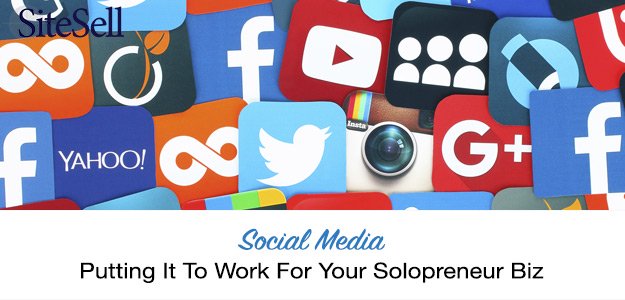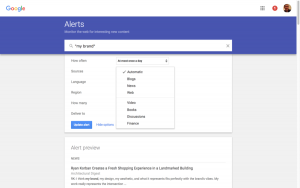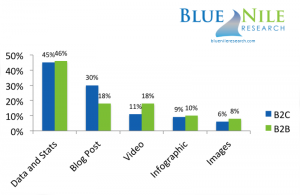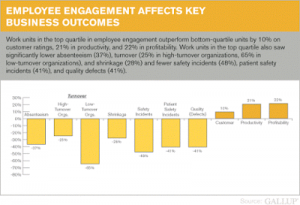
When Trafeze rolled out in July, two of my sites were accepted as Traffic Sellers. While they both scored well for traffic, the social media scores were downright embarrassing. Then and there, I decided to put in the effort to improve them.
Where do I start? I’m a writer, so I almost always begin with research. Here’s what I learned.
If you’re a solopreneur, freelancer, or small business owner, getting the results you want from social media can make or break your business. But what does that really mean?
In the early days of social, it was all about follower counts. How many Facebook friends did you have? How many Twitter followers?
It didn’t take long to realize that the number of followers didn’t correlate well with results. In fact, it turns out that follower counts is what we call a vanity metric. Something that makes you feel good, but that’s about all it does.
Instead, we’ve found that engagement is what you should strive for if you want your social media efforts to pay off in increased website visitors and sales.
Traditional Advertising vs Permission Marketing
Here’s the path that advertising has followed over the years.
Back in the day, a company would purchase space in a newspaper or magazine to tout its wares. Then they’d buy airtime on radio and, later, television. Then banner ads on websites.
Those types of advertising are interruptions for the reader/listener/viewer, and they’re intrusive.
In 2008, Seth Godin coined the phrase, “permission marketing,” and content marketing was born.
“Permission marketing is the privilege (not the right) of delivering anticipated, personal and relevant messages to people who actually want to get them. It recognizes the new power of the best consumers to ignore marketing. It realizes that treating people with respect is the best way to earn their attention.”
-Seth Godin
Someone chooses to visit your website and read your content. That’s a platform for permission marketing. Email, when someone has signed up for your list, is permission marketing. When people follow you on Twitter, they are raising their hands and saying, “I want to know what you have to say.”
Permission marketing, or content marketing, is more effective than old-school broadcast advertising. To work well, it requires an audience.
Building an Audience
When the internet was in its infancy, it wasn’t all that hard to attract an audience. Put together a site, register with search engines like Alta Vista (remember them?) and you’d get some attention. Today, developing traffic from search takes longer and, thanks to some Google updates (I’m talking about you, Panda and Penguin), you truly do need quality content.
Similarly, when social media was in its infancy, it was pretty easy to get noticed. That’s not the case today either.
So what’s a busy solopreneur to do?
Job one is to fill a website with quality content. Once you have 20-50 pages of well written, keyword-rich (but not stuffed!) content, Google will start to take notice. Your website serves as the hub of all your marketing efforts.
Next, work on your email list. Sending email to an audience that has opted in is still the best way to get your marketing message out there.
After that, focus on social. (Just don’t play the “how many followers do I have?” game.) Instead, focus on engagement.
What is Engagement?
There are three important measurements for social media effectiveness.
Reach identifies the number of people who see your content.
Impressions refers to the number of times your content is displayed.
Engagement is the metric we’ll focus on here. At its most basic, engagement means getting your fans or followers to do something in response to your message. That could be something as simple as a:
- Like
- Retweet
- Share
- Comment
- +1
- Click on a link
Don’t stop there! Sprout Social, creators of the social media tool of the same name, says that “Engagement is not just a single interaction with one of your customers, but an open line of communication over a period of time.” [Source]
They recommend four steps.
- Start the conversation — host Q&A or AMA sessions for a high level of interaction. Every week, social media company Buffer hosts a Twitter chat on a topic they announce in advance. Their audience can ask questions and interact. That’s a very effective way to start a conversation.
- Ask your followers to promote your content with an @ mention or a hashtag. Hold a contest. According to Adweek, this type of “high-quality engagement” where your followers share, retweet or repin, is the most valuable social metric.
- Weave your content in with current happenings. Tee shirt printers and signmakers love big political races!
- Be attentive — if a follower or fan asks a question, or voices a concern, respond quickly.
When you’re getting good engagement on social media, you’ll see a corresponding traffic increase on your website.
Which Social Media Platforms?
This is the $ 64,000 question.
The short answer is, use the platforms where your ideal audience, your persona, hangs out. The longer answer is, it’s part metrics and part instinct or preference.
Ask
If you truly don’t know where to start, try asking your readers. Put together a brief survey — no more than three questions — asking your readers which social platforms they use most. You can post a survey on the site, or you can send an email to your subscriber list with a link.
Use Google Forms to create the survey, or use a service like Survey Monkey. If results show a clear preference among readers, start with that platform. Set up your account and get comfortable posting and interacting.
If, like me, you already have a social media presence but it’s not as effective as you’d like, use the survey results to show you which platform to focus on first.
Look for Industry-Specific Forums
Depending on your industry or niche, there may be some very specific places where your readers already hang out. Some years back, I took an online course that led me to start my WordPress Building Blocks website. Several times a year, a new group of students takes the course.
I still participate in those forums, offering help and advice where I can. I didn’t start doing it as a business-building tactic, I did it because I’d received so much help there that I wanted to pay it forward. Interestingly, though, I get a good amount of business from new course participants. It’s not a social media platform, but it’s a social medium that works for me and I stay engaged there.
Facebook is the Default
If your audience isn’t big enough yet for a survey, and you can’t find industry-specific hangouts, start with Facebook. It’s the biggest, and you probably already have a profile.
For business-related topics, the big four platforms are Facebook, Twitter, LinkedIn and Google Plus. If you’re in more of a consumer niche, substitute Pinterest and Instagram for LinkedIn.
Start with one platform and get good at using it before you add another. If you try to master Facebook, LinkedIn, Pinterest, Instagram, and Google Plus all at once, you’ll spin your wheels without much in the way of results.
Don’t Broadcast, Engage!
Your new social platform is not a billboard. You want to post a combination of original content, curated content (where you’re resharing someone else’s material), and entertaining posts. A very rough rule of thumb (which you should refine based on your niche and audience) is that, at most, one in four posts should promote your own stuff.
Think about how you meet people at a party. Do you march up to a stranger, say, “Hi, I’m Joe and I sell widgets, how many would you like to buy?” If that’s you, I hope we’re not at the same social event!
A more effective approach would be to comment about the refreshments or the decorations, then refer to a recent local sporting event, mention the weather, and eventually stick out a hand and say, “I’m Susanna.”
If the other person reciprocates with her name, you have the start of a relationship. After a lot of small talk, the conversation might move around to “what do you do?”
Think about this conversational approach when you’re posting on social media. You really don’t want to be the guy who can only talk about himself!
You can automate your posting, to an extent. When you create a new piece of content on your website, plan to share it on social. I like the CoSchedule editorial calendar, which helps you plan and publish posts on your website as well as social posts. Use a tool like Hootsuite or Buffer to schedule posts when you’re curating content. That way, you can space the posts out throughout the day and week.
The engagement part, though, can’t be automated. Tools like HootSuite let you see several social channels in one place, and will save you time. But you still have to see the post, tweet, or pin and respond to it appropriately.
If someone asks you a question, answer it. If someone you’re following asks a question and you can help or provide information, do so. Once you’re familiar with the platform, you can be more strategic in your interactions. For example, if you share someone’s content, ask him questions, or mention him in your messages to your audience a few times, he’ll begin to notice. That’s how you start a relationship.
After you’ve developed an engaged social media following, visits to your website will increase and you’ll do more business.
Digital & Social Articles on Business 2 Community(86)










